Sustainable Packing: 7 Eco-Friendly Ideas for Your Business
Switching to sustainable packaging is good for your business and the environment. Here are seven eco-friendly packing ideas to help you get started.

Need eco-friendly packaging for your business? Take sustainability further by spending less time on the road with Circuit for Teams.

As of 2022, customer awareness of environmental issues is at an all-time high.
People are trying to do their part in fighting climate change by shifting to a plastic-free lifestyle.
Customers are becoming very conscious about the brands they choose to buy from today.
In fact, 60% to 70% of US consumers said they’d be willing to pay more for sustainable packaging.
So, customers find shopping from an ethical and responsible business important.
As a small business owner, it’s no longer enough to pay lip service to environmental issues.
Finding and using the right packaging is essential.
But what exactly is sustainable packaging?
It’s the process of using eco-friendly (think biodegradable, compostable, or reusable) materials and limiting plastic in your product packaging.
This can include biodegradable packaging materials and even bio-based packing tape and stickers.
Not sure where to start?
I’ll explain the benefits of using sustainable packaging solutions and list some ideas to help you attract environmentally conscious consumers.
What are the business benefits of eco-friendly packaging?
To better understand why you should switch from plastic packaging to eco-friendly packaging, let’s first take a look at why plastic is harmful.
- Most conventional plastics are non-biodegradable. And some other plastics can take anywhere between 20 and 500 years to decompose.
- Single-use plastics — like plastic bags, bubble wrap, straws, and Styrofoam — are the worst polluters. They are only used once and take hundreds of years to decompose.
- Most single-use plastics can’t be recycled in the US and get dumped in landfills and oceans. There, they can contaminate landscapes and hurt marine life.
It might be shocking to learn that every plastic Coke bottle, tube of toothpaste, and shampoo container you’ve ever bought is still around somewhere.
Crazy, right?
What’s even crazier is that it’ll be around long after you’re gone.
Switching to eco-friendly packaging materials helps restore faith in that old “reduce, reuse, recycle” mantra.
And it emphasizes the importance of moving toward a zero-waste lifestyle.
Besides making a difference in the environment, switching to eco-friendly packaging can benefit your business.
By using sustainable, reusable packaging, your company can obtain green business certifications.
Then, you can market your business to an eco-conscious customer base.
B Corp and Green Business Bureau are two independent organizations measuring brands’ environmental impact and certifying green businesses.
The number of environmentally conscious consumers has been on the rise for the past few years.
In fact, according to a 2021 survey, 50% of consumers said they’ve become more eco-friendly in the past six months.
More importantly, 61% of remote workers said they buy products with eco-friendly or minimal packaging.
This is a massive untapped market.
Customers want to buy from eCommerce websites that reflect their values and beliefs.
For example, a brand that uses sustainable food packaging is probably preferable to one that wraps its food in plastic.
Financial benefit of recyclable packaging
What’s more, recyclable packaging is cost-effective.
Deliveries often come in huge cardboard boxes full of plastic cushioning — while the product inside is often too small to justify such elaborate packaging.
Not to mention, many customers find this annoying and wasteful.
You may even have experience opening a package only to realize the actual product just takes up a corner.
Resizing your new packaging boxes and minimizing packaging materials can help reduce overall delivery costs.
For example, a smaller packaging design takes up less space in your driver’s vehicle.
Your driver can then deliver more packages at one time rather than making multiple trips — saving your business both time and money (fuel, vehicle maintenance — all that fun stuff).
Not to mention, you’ll be doing good by the planet and making customers happy in the process.
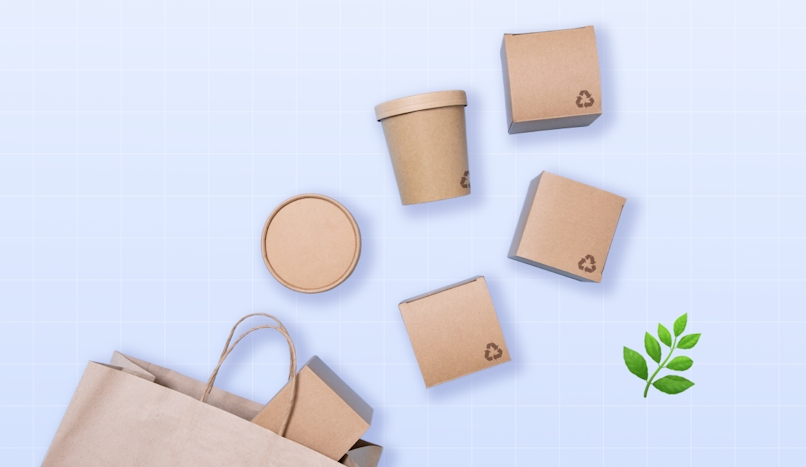
7 eco-friendly packaging ideas
On the whole, the world creates 300 million tons of plastic waste every year.
That’s way too much plastic!
So, the goal of businesses should be to deliver products safely without impacting the environment.
This means ditching plastic and switching to more sustainable alternatives.
Luckily, you can choose from several eco-friendly packaging options.
Compostable mailers — best for light and sturdy items
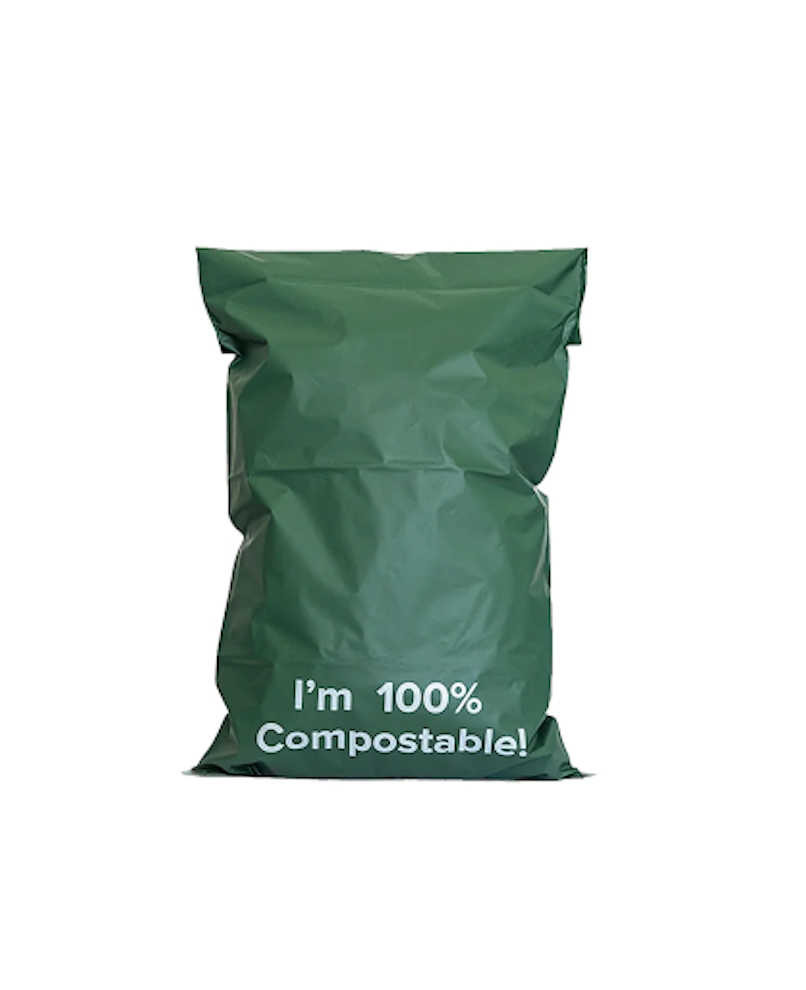
The word “compostable” means any material that breaks down and decomposes without leaving toxic remnants.
Compostable materials don’t biodegrade on their own. Instead, they need human intervention.
Compostable packaging products are typically made using natural, plant-based materials, such as cornstarch, bamboo, seaweed, and sugarcane.
Compostable mailers decompose within three to six months at a commercial composting facility.
There are several types of compostable mailers.
Bio-poly mailers are made with a combination of natural raw materials like corn or sugarcane and fossil fuel-based carbon.
Most of these mailers contain PBAT, a biodegradable synthetic polymer derived from petrochemicals.
Paper mailers are another option and can be ideal for apparel companies.
They are sturdy, biodegradable, and easily recyclable. Many of them also resist water absorption.
Kraft mailers are 100% compostable and reusable.
The raw material for kraft paper is wood pulp.
In addition, the chemicals used for making kraft paper are reusable.
Biodegradable packing peanuts — best for fragile items

Who doesn’t remember playing with Styrofoam packing peanuts in their childhood?
Fortunately, they’ve gone out of fashion.
Marine animals often mistake Styrofoam for food, creating huge health issues.
Packing peanuts fill gaps within a package to protect the product against shock and avoid breakage.
But because they are non-biodegradable and take hundreds of years to decompose, they’re not a sustainable option.
The good news is that some packing peanuts are made from naturally derived starches like wheat and corn.
And it’s super easy to dispose of them since they’re water-soluble.
Since they dissolve quickly in water, they also present no danger to marine life and don’t cause land pollution.
Recycled cardboard — best for bigger items
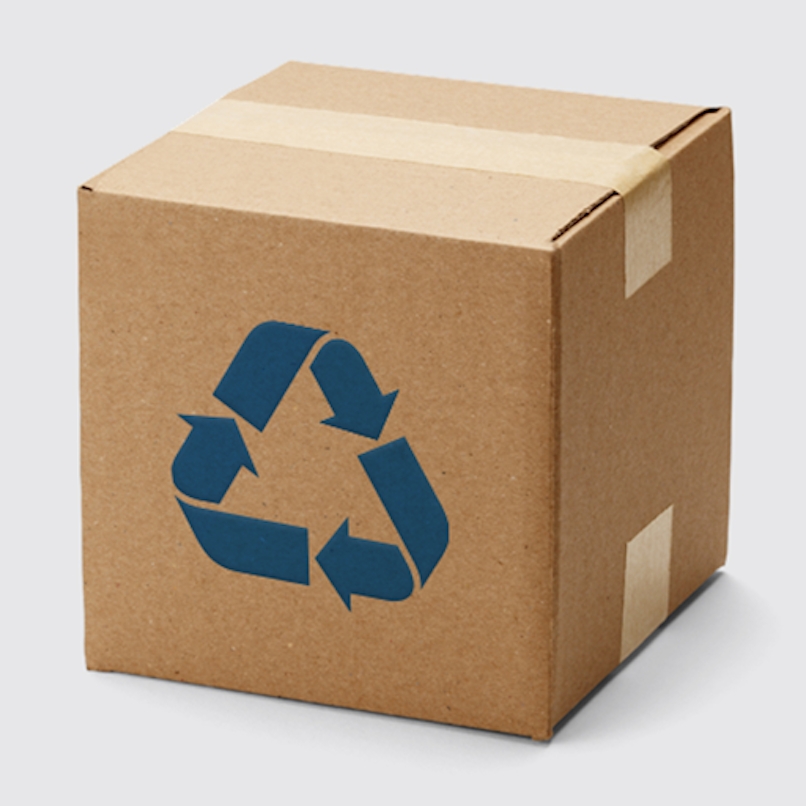
While cardboard is a biodegradable material, it has its own environmental concerns.
Cardboard is made from organic material (tree pulp) and can threaten forestation.
But mindlessly cutting down trees isn’t the solution to our problem.
To use cardboard sustainably, consider using recycled, post-consumer paper and cardboard.
Fortunately, cardboard is quite sturdy and can be reused five to seven times before its fibers lose strength.
Even then, cardboard can be recycled into other paper products.
You can also use recycled cardboard as package filler material like cardboard netting, shreds, and chips.
All of these are eco-friendly alternatives to bubble wrap and packing peanuts.
Biodegradable air pillows — best for adding padding
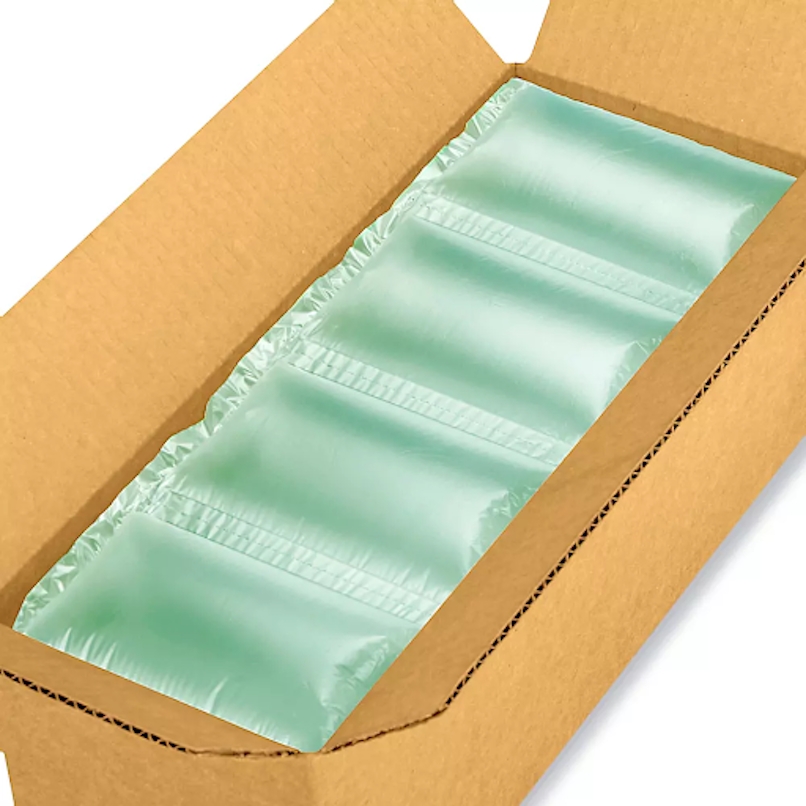
Air pillows are inflatable bags that fill gaps and spaces in packaging boxes or cartons.
They add padding to the product and prevent it from breaking or shifting in transit.
They’re a good alternative to plastic filler materials like packing peanuts and bubble wrap.
Reduce the amount of plastic used to fill empty spaces by using these pillows, which contain only air.
Plus, they’re reusable. Just be careful to choose a biodegradable variety instead of plastic.
Biodegradable air pillows are made of corn, potato, or wheat starch and decompose much faster than plastic.
Corrugated packaging — best for uniquely shaped products
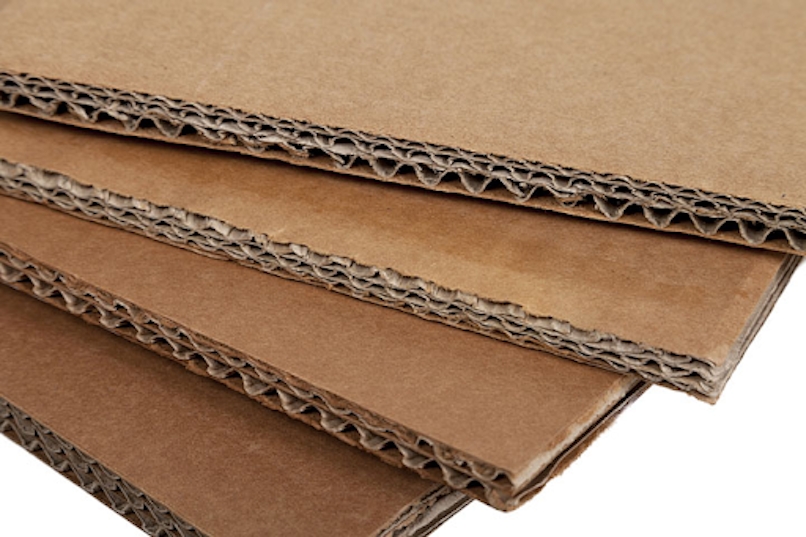
Corrugated boxes are made from tree pulp, recycled paper, and cardboard.
They are made up of 70% to 100% recycled material.
Cardboard recycling is known to positively impact the environment. For example, for every ton of cardboard you recycle, you save 17 trees.
This makes corrugated packaging a sustainable and easy-to-recycle packaging product.
And from a delivery point of view, corrugated material is one of the sturdiest available.
It’s made by fluting two or more sheets of paper and pressing them between two thicker liners.
At the same time, it’s also flexible, allowing it to pillow the product within.
This helps make sure the product doesn’t move or break during shipping.
Corrugated cardboard waste also makes for excellent filling material.
Small cuts are made to the corrugated cardboard, creating a mesh-like pattern that helps protect products from shocks.
Mushroom packaging — best for insulating products
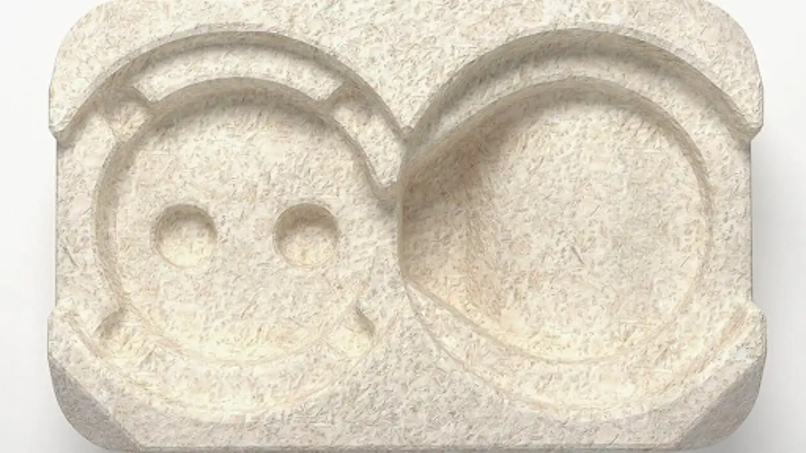
Mushroom packaging is created by letting mushroom roots called mycelium grow around agricultural waste like corn stalks, hemp, and husks.
After a few days, the fibers link the waste together to form a solid shape.
The final product is a sturdy material that can hold a product in its place.
Since you can’t use mushroom roots or agricultural waste to feed animals or humans, mushroom packaging uses waste and turns it into something useful.
Its organic nature also means it has no toxic impact on the environment.
This kind of packaging is all-natural, completely biodegradable, and can be composted at home.
It’s great for holding small objects like jars, candles, and bottles in place.
Green cell foam packaging — best for electronics
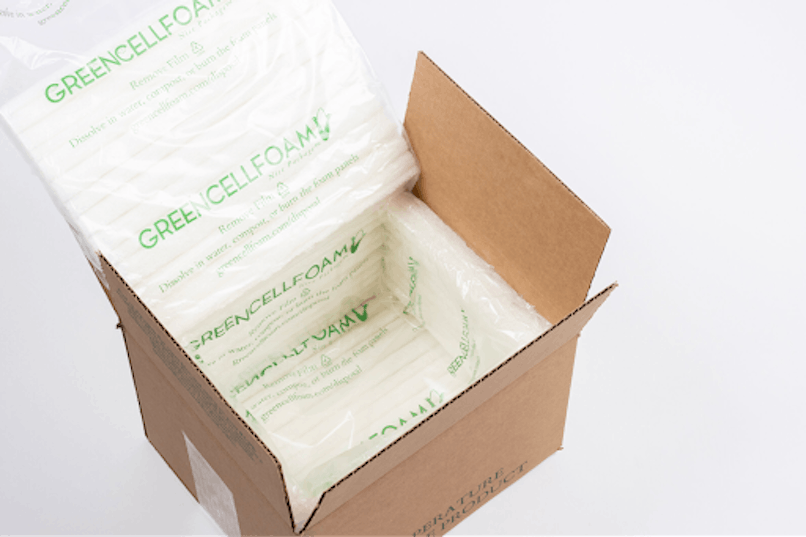
Another alternative to Styrofoam and bubble wrap is the relatively new green cell foam.
It’s a biodegradable and water-soluble material made from non-GMO corn starch.
It helps cushion products and secures them in place during transportation.
Green cell foam needs less energy and produces 80% fewer greenhouse gas emissions than Styrofoam.
In addition, it’s water-soluble and dissolves under running water.
Another way to dispose of GCF is to burn it.
It burns cleanly in barbecues, fireplaces, and power plants.
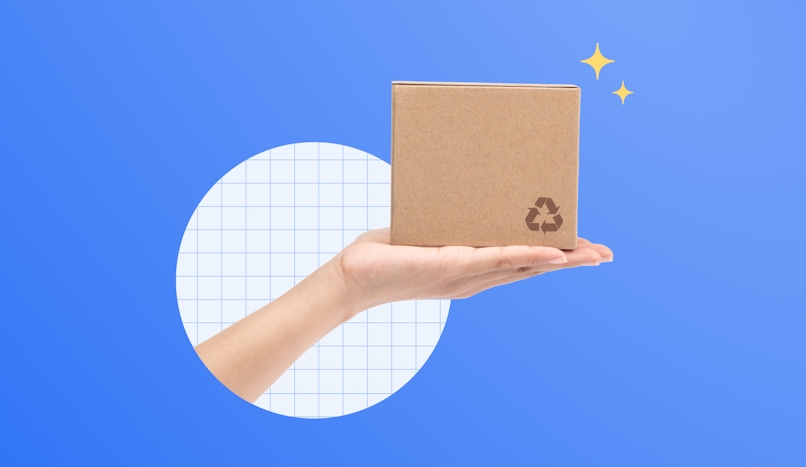
Delivering orders yourself? Circuit for Teams optimizes the process
It’s important for any modern business or delivery service to meet sustainability standards.
There are several ways to optimize your delivery process and reduce your carbon footprint.
One of the easiest ways is to streamline your delivery process, especially route planning.
The less time your drivers spend on the road, the better it is for the environment.
Circuit for Teams can help in that department.
Our routing software comes up with the fastest routes for your entire driving team, helping them avoid things like idling in traffic, backtracking due to missed deliveries, and more.
As a result, your drivers use less fuel and can make more deliveries — keeping both customers and the planet happy.





